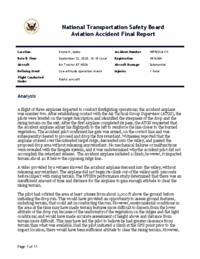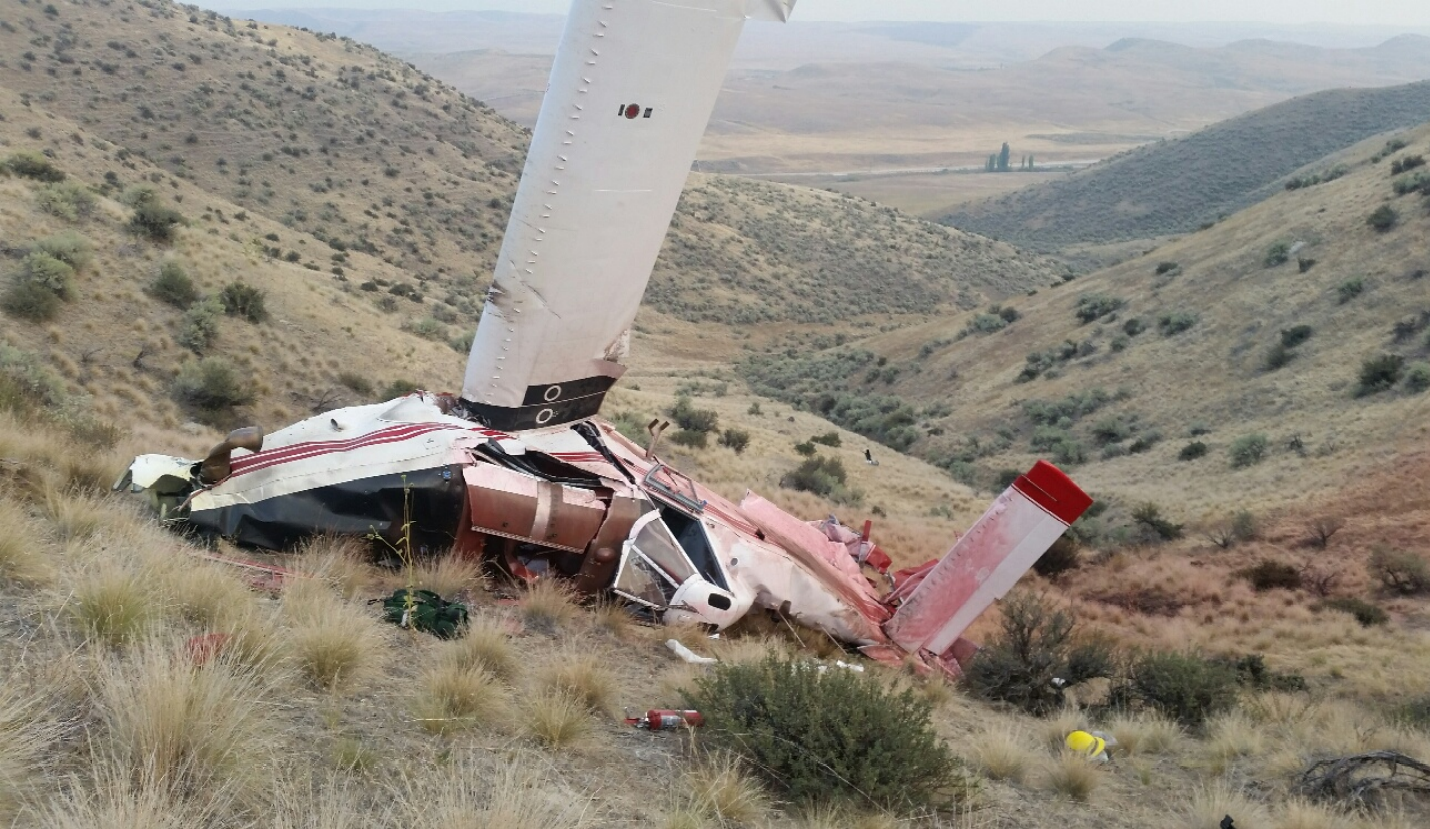
This information is added by users of ASN. Neither ASN nor the Flight Safety Foundation are responsible for the completeness or correctness of this information.
If you feel this information is incomplete or incorrect, you can submit corrected information.
| Date: | Tuesday 22 September 2020 |
| Time: | 18:30 |
| Type: |  Air Tractor AT-802A |
| Owner/operator: | Aero S.E.A.T. Inc |
| Registration: | N836MM |
| MSN: | 802A-0836 |
| Year of manufacture: | 2020 |
| Engine model: | Pratt & Whitney PT6A-67AG |
| Fatalities: | Fatalities: 1 / Occupants: 1 |
| Other fatalities: | 0 |
| Aircraft damage: | Destroyed |
| Category: | Accident |
| Location: | Emmett, ID -
 United States of America United States of America
|
| Phase: | Manoeuvring (airshow, firefighting, ag.ops.) |
| Nature: | Fire fighting |
| Departure airport: | Ontario Airport, OR (ONO/KONO) |
| Emmett, ID | |
| Investigating agency: | NTSB |
| Confidence Rating: |
On September 22, 2020, about 1830 mountain daylight time, an Air Tractor AT-802A, N836MM, was substantially damaged when it was involved in an accident near Emmett, Idaho. The pilot was fatally injured. The airplane was operated as a public aircraft for the purpose of firefighting.
A flight of three airplanes departed to conduct firefighting operations; the accident airplane was number two. After establishing contact with the Air Tactical Group Supervisor (ATGS), the pilots were briefed on the target description and identified the steepness of the drop and the rising terrain on the exit. After the first airplane completed its pass, the ATGS requested that the accident airplane adjust his flightpath to the left to reinforce the line closer to the burned vegetation. The accident pilot confirmed his gate was armed, on the correct line and was subsequently cleared to proceed and drop the fire retardant. Witnesses reported that the airplane crossed over the intended target ridge, descended into the valley, and passed the proposed drop area without releasing any retardant. No mechanical failures or malfunctions were revealed with the firegate system, and it was undetermined why the accident pilot did not accomplish the retardant release. The accident airplane initiated a climb; however, it impacted terrain about 40 ft below the opposing ridge line.
A video provided by a witness showed the accident airplane descend into the valley, without releasing any retardant. The airplane did not begin its climb out of the valley until 3 seconds before impact with rising terrain. The NTSB’s performance study determined that there was an insufficient amount of time and distance for the airplane to gain enough attitude to clear the rising terrain.
The pilot had orbited the area at least 3 times from about 2,000 ft above the ground before initiating the drop run. This would have provided an opportunity to assess ground features, including terrain, that could aid in conducting the run. However, environmental conditions in the area at the time may have made terrain features more difficult to discern from the lower altitude of the drop run because of the uniformity of the vegetation on the ridges and flat light conditions; and would have made accurate assessment of height above and distance from terrain more difficult. This may have led the pilot to believe he had greater clearance from terrain than what was available. Had the pilot initiated a climb at the GPS point prior to the impact location, there would have been sufficient altitude to clear the rising terrain. However, the airplane continued to descend into the valley and the pilot initiated the climb too late for the airplane to clear terrain.
Postaccident examination of the recovered airframe and engine did not reveal evidence of any mechanical anomalies that would have precluded normal operation.
Probable Cause: The pilot’s descent below surrounding terrain and his delayed decision to initiate a climb which resulted in impact with terrain. Contributing to the accident were terrain and lighting conditions that affected the pilot’s ability to accurately assess terrain clearance.
Accident investigation:
 |
|
Sources:
https://www.idahonews.com/news/local/brush-fire-grows-to-25-acres-near-emmett
NTSB
Location
Images:

Photo: NTSB
Media:
The NTSB is investigating the crash Tuesday of an Air Tractor AT-802 in Emmett, Idaho. The NTSB is not traveling to the crash scene at this time.
— NTSB_Newsroom (@NTSB_Newsroom) September 23, 2020
Revision history:
| Date/time | Contributor | Updates |
|---|---|---|
| 23-Sep-2020 10:30 | gerard57 | Added |
| 23-Sep-2020 11:09 | Captain Adam | Updated [Aircraft type, Operator, Location, Embed code] |
| 23-Sep-2020 13:09 | RobertMB | Updated [Aircraft type, Registration, Cn, Operator, Source, Embed code] |
| 23-Sep-2020 13:15 | RobertMB | Updated [Operator] |
| 27-Feb-2021 19:21 | rudy | Updated |
| 20-Jul-2022 03:27 | Captain Adam | Updated [Time, Departure airport, Destination airport, Source, Narrative, Category, Accident report, Photo] |
Corrections or additions? ... Edit this accident description
The Aviation Safety Network is an exclusive service provided by:


 ©2024 Flight Safety Foundation
©2024 Flight Safety Foundation